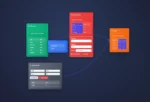The political battlefield has undeniably shifted toward data-driven decisions. Understanding voter behavior is no longer just about surveys and polls; it’s about leveraging sophisticated analytics tools and visualization systems to reveal hidden insights. At a time when campaigns are won or lost by razor-thin margins, harnessing data analytics and visualization can mean the difference between victory and defeat. Every interaction, preference, and behavioral indicator provides valuable clues for strategists eager to craft compelling narratives, targeted outreach campaigns, and persuasive voter engagement strategies. With advanced technology, candidates and political decision-makers are no longer in the dark—they understand exactly what voters crave, expect, and ultimately, the reason they step into the ballot box.
The Rise of Data Visualization in Political Campaigns
Gone are the days when voter behavior analytics were confined to spreadsheets, tedious cross-tabulations, or manual data analyses. Today’s campaigns need real-time insights presented clearly and intuitively, which is why data visualization systems have become indispensable for political strategists. The visualization of voter behavior data has immensely facilitated better campaign decision-making, enabling strategists to instantly map demographic interests, track voting preferences, and predict electoral outcomes with greater accuracy.
A robust voter behavior visualization system comprises intuitive dashboards, real-time data streaming, and interactive graphical representations such as heat maps, bar charts, and scatter plots. These visualizations can display data segmented by geography, age, income, previous voting history, and socioeconomic status—with just a few mouse clicks. Consequently, campaigns can strategically allocate their resources to clearly identified voter segments rather than spreading out their efforts randomly.
Additionally, visual analytics allow campaign managers to seamlessly explore voter concerns, sentiment analyses, and cross-demographic synergies. For example, interactive charts can illustrate how voter preferences within one age bracket compare with preferences within another, helping political marketers better fine-tune their messages. When visualized effectively, data trends become immediately actionable insights, helping decision-makers understand quickly changing voter environments. This cross-modal data alignment enhances the integration of multiple data inputs and supports unified analytics views across complex campaign environments.
The Role of Advanced Data Integration in Campaign Analytics
Successful political analytics depends on robust data integration capabilities. Campaign teams encounter vast amounts of voter data—everything from public demographic records and surveys to voting histories, digital engagement platforms, and social media trends. Aggregating and harmonizing these varied data streams is crucial to forming a cohesive narrative and driving strategic campaign decisions.
To overcome fragmented data challenges, innovative campaigns utilize complex ETL (extract, transform, load) workflows and advanced data integration techniques, including asynchronous ETL choreography. Adapting advanced analytical methods enables campaign strategists to operate beyond traditional data processing confines, integrating real-time insights and asynchronous data streams seamlessly to produce timely, accurate voter metrics.
Handling sensitive voter information demands secure and compliant methodologies. Modern voter behavior visualization systems incorporate sophisticated test data management techniques, ensuring personally identifiable, sensitive data remains anonymized and secure while maintaining analytical utility. This delicate balance between data privacy and strategic insight underscores the sheer ingenuity involved in modern voter analytics.
Implementing security mechanisms like multi-party computation for secure analytics helps campaign teams ensure voter confidentiality, fostering trust between campaign teams and constituents. In an age increasingly mindful of privacy and data security, maintaining robust analytics without compromising individual privacy provides a significant competitive advantage.
Harnessing AI and Machine Learning for Predictive Campaign Insights
The true transformative power behind political campaign analytics is derived from applying cutting-edge AI and machine learning technologies. Predictive analytics and advanced modeling techniques allow campaign managers to forecast voting behaviors, sentiments, and election results with higher precision and confidence. Machine learning algorithms can analyze historical voting patterns, current demographic changes, and trending topics to generate accurate, reliable predictions of voter intent.
AI-driven analytics visualize potential voter enthusiasm factors—ranging from economic issues and healthcare concerns to education initiatives and social justice topics. Strategists can utilize actionable visualization of insights around voter communities most likely to support certain policy positions, which aids targeted canvassing and digital outreach.
Furthermore, by leveraging vector embedding pipeline designs, campaign visualization systems become semantically intelligent, capable of understanding voter sentiment, complex language, and subtle preference shifts. This capability allows campaigns to predict how certain voter segments may respond to messaging, policy framing, or debate performances. These depth-oriented prediction models allow candidates to preemptively react to potential voter shifts, adjusting campaign strategies dynamically based on robustly analyzed visual data.
Empowering Voter Behavior Visualization with Effective Text Integration
Beyond standard visualization features such as charts, maps, and graphs, leading-edge voter behavior analytical systems integrate effective textual elements to enhance user engagement, storytelling capabilities, and actionable insights. Text integration in data visualization becomes more than a simple labeling mechanism—it conveys detailed context, insights, and even persuasive narratives designed to capture a voter’s attention or communicate analytics insights to campaign stakeholders efficiently.
Whether incorporated as dynamic annotations explaining voter interaction trends or descriptive narratives that contextualize regional survey data, quality text integration enriches the visualization user experience. When software empowers campaign teams with interactive storytelling capacities, complex voter trends are easily distilled for strategic decision-making.
Interactive text annotations and dynamic visual cues provide instant clarity where voter communities diverge, allowing strategists to shift resources, refocus social media campaigns, or even reframe message framing to better resonate with targeted demographics. Enhanced textual visualization is thus essential in ensuring political analytics are both actionable and intuitively understood by decision-makers within tight campaign timelines.
Data Governance and Visualization Metrics: Ensuring Quality and Trustworthiness
With immense influence, political data analytics must maintain rigorous standards. Accurate voter behavioral insights require precise, high-quality data, which inevitably places data governance and metric collection front and center for any successful visualization implementation. Governance strategies define how voter data quality should be controlled, maintained, and monitored, ensuring campaigns base decisions on highly reliable, transparent, and accountable insights.
Campaign strategists must implement structured data governance strategies to monitor visualization accuracy, data lineage, and metric consistency. Clear data governance policies promote trustworthiness and reliability of campaign analytics insights. It ensures correct voter segmentation, engagement statistics, and electoral predictions—elements crucial to campaign direction.
Ultimately, governance maintains long-term integrity in voter strategy visualizations, empowering campaigns to explore voter engagement, pinpoint geographic outreach areas, target demographic messaging, and extract predictive insights with absolute confidence. It solidifies organizational accountability, transparency, and ethical handling—key operational success standards in today’s highly scrutinized political analytics environment.
The Future of Voter Behavior Visualization Systems
As campaigns evolve and become more technologically advanced, frameworks like the data lakehouse implementation promise to become industry mainstays for large-scale data management and analytics in political contexts. Voter behavior data lakes or lakehouses enhance scalability and flexibility of integrating real-time voter behavioral information, community feedback, surveys, and digital interaction data.
Visualization systems will continuously become smarter, embracing advanced semantic technologies, predictive targeting, secure computations, and more refined textual annotations. Political campaigns willing to embrace innovative visualization approaches and analytics solutions will realize a transformative competitive advantage.
At Dev3lop, we hold expertise across data and analytics technologies, including Microsoft SQL_SERVER, supporting robust and scalable analytical environments. Intelligent, visually compelling analytics will profoundly shape future political strategies, enabling smarter decisions, clearer insights, and direct voter engagement. The visualization revolution is well underway—and successful campaign strategists will not hesitate to embrace it.
Thank you for your support, follow DEV3LOPCOM, LLC on LinkedIn and YouTube.

























